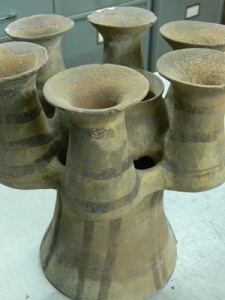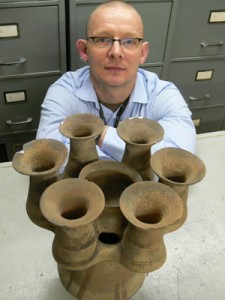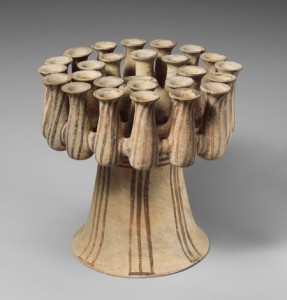It’s been in the Maidstone Museum for years, but it wasn’t on display and the staff had no idea how rare and valuable it is until a Greek expert from the British Museum came to assess their collection.
The Early Cycladic III Kernos, a vessel that incorporates 6 cups around a globular basin on a fluted base, is an unusual item especially in the complete condition it is in. […]
The Kernos was used to make offerings to the Gods and each cup would have been filled with a different substance such as milk, honey and oats.
We know from descriptions that the filled vessel would have been held on the head of the devotee until sanctified by the priest.
This type from this period is predominantly found at Phylakopi on Melos, the same home as the most famous sculpture in the world – the Venus de Milo.
There are only 20 of these vessels known in the world, and most of them are in major museums like the Met and the Louvre.
I think it’s a little creepy looking, to be honest.


Ugh. Too many tubules. The one at the Met is even scarier.

Creepy! It’s like the archaic Greek version of a navel orange or some sort of fungal growth.
My hangups aside, it’s a major coup for the little museum. Assuming it wasn’t looted, I’m very happy for them.
Definitely looks like some cultish accoutrement – something out of H.P. Lovecraft. I can just picture the porridge dripping down the sides and over the devotee.
Yes! It’s totally Chthuhlu’s sippy cup. :skull:
Not a rhetorical question: How could it not have been looted?
It could have been acquired fairly legitimately a century or more ago then passed around.
The one at the Met actually has a legitimate record of ownership. It was found on Melon in 1829 by a British naval captain. His widow gave it to Eton 30 years later and the Met bought it from Eton in 2004.